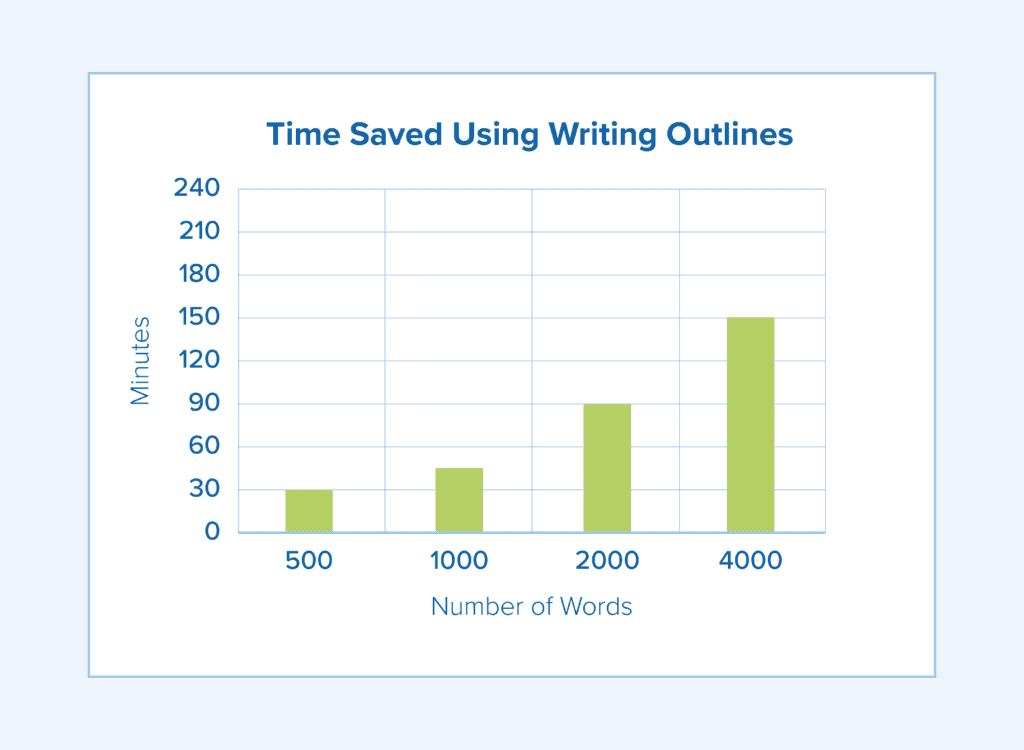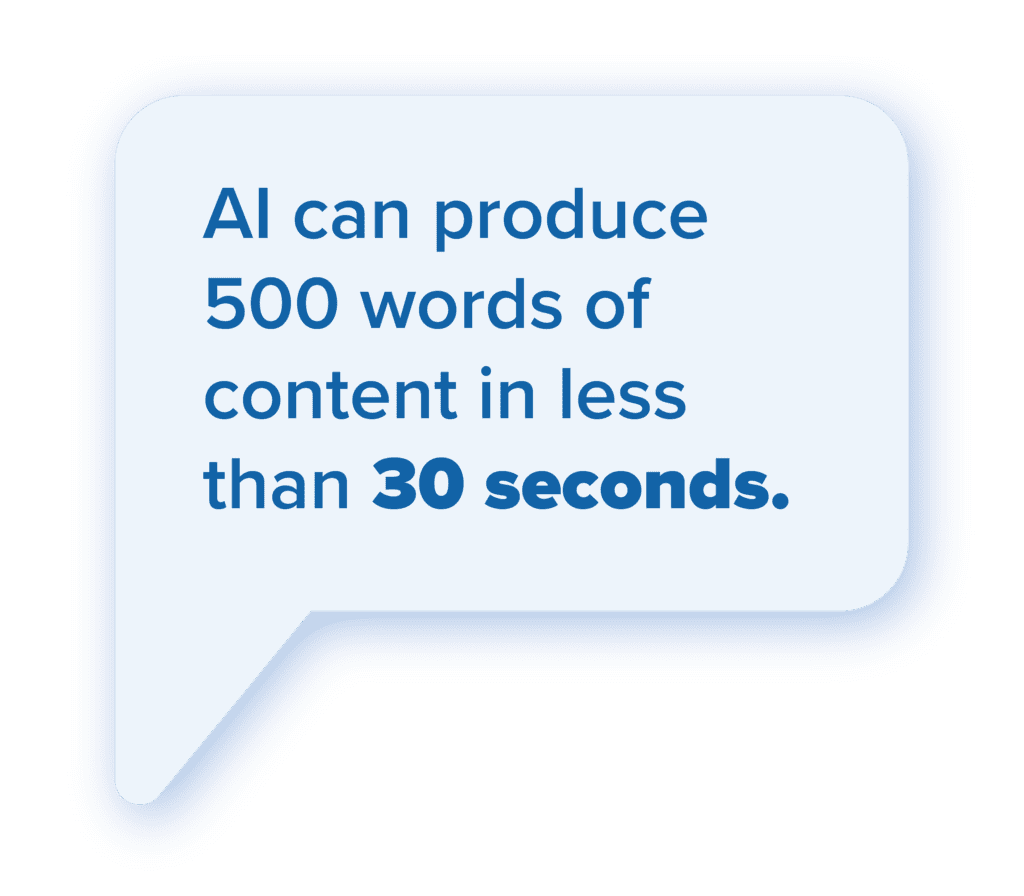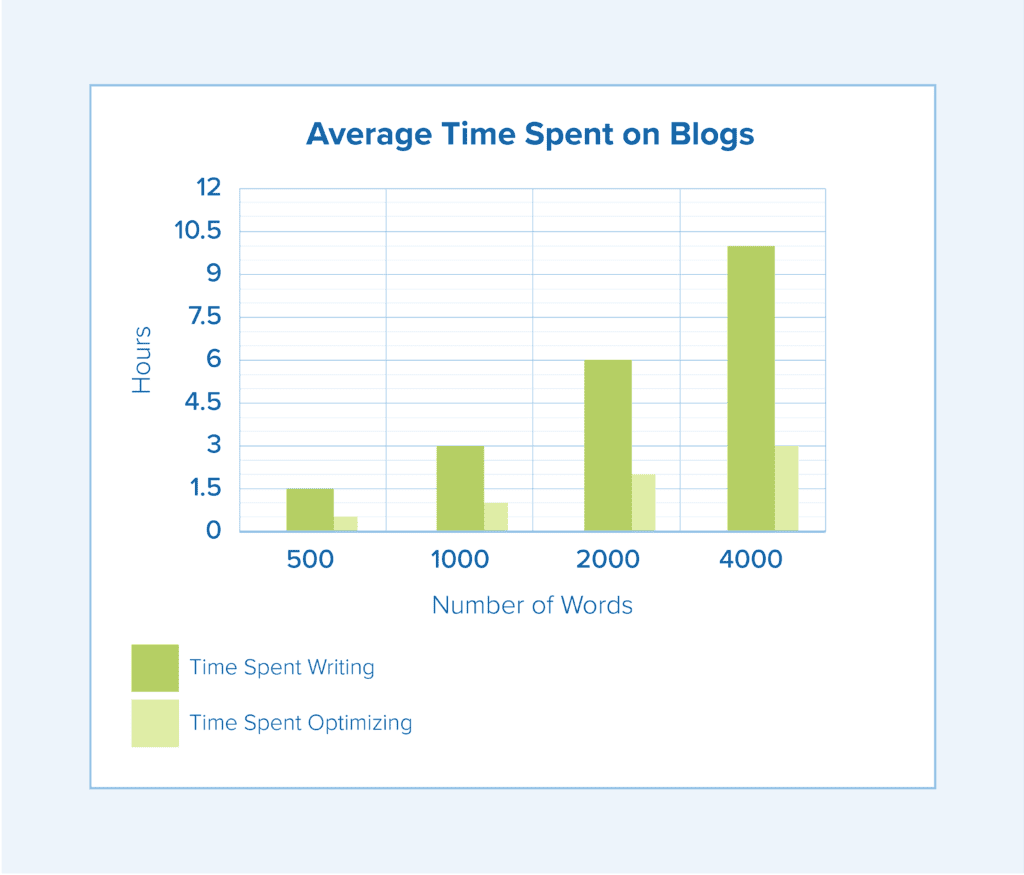
In the hyper-competitive world of the internet, time is of the essence. As a content creator, you understand the importance of developing engaging content while also maintaining efficiency. The ability to write blog posts faster not only helps you stay ahead of deadlines but also allows you to focus on vital strategy and other content goals.
Whether you’re a seasoned creator or just starting your journey, mastering the art of writing blog posts quickly can make a significant difference in your productivity. In this blog post, we will share valuable tips and strategies to help you write blog posts faster without compromising on quality.
Get ready to discover the blueprint that will help you become a more efficient and effective content creator. Let’s dive in!
How to Write Blog Posts Faster: 7 Tips
There is no tried and true method of writing blogs faster since every client, and goal is different and no method will work every time. However, there are some general guidelines for the blog writing process that can elevate your writing speed and production value. Here’s what you need to know:
1: Start With Keyword Research
Conducting thorough keyword research is essential for optimizing your blog post for SEO. Utilize keyword research tools or platforms to identify relevant keywords and phrases that align with your blog post topic. Look for popular and high-ranking keywords that have the potential to drive organic traffic to your blog. By targeting the right keywords, you increase the likelihood of ranking well in search engine results.
2. Structure Your Content for SEO
Organizing your blog post using an SEO-friendly structure is crucial for search engine optimization. Craft a clear and concise title that incorporates your target keyword naturally. Break your content into headings and subheadings using appropriate HTML tags (H1, H2, H3, etc.). This helps search engines understand the hierarchy and structure of your content, improving its visibility and relevance.
This step can move faster if you use your foreknowledge from step one. When compiling keyword research, you’ll come across high-ranking articles that follow certain structuring patterns. Make sure you’re organizing your own blog in a similar manner while innovating with your own ideas.

3. Write Informative and High-Quality Blog Posts
Focus on creating high-quality, informative content that provides value to your readers. Search engines prioritize content that addresses user intent and provides comprehensive answers to their queries. By delivering valuable content that satisfies user needs, you improve the chances of ranking higher in search results and attracting organic traffic.
4. Utilize AI to Increase Writing Speed

AI technology can be used in a variety of ways to increase the pace of your blog article writing and churn out high-quality blogs. If, however, AI is used exclusively, it will turn into a crutch that hampers innovation and produces sub-quality blogs. Here are some ways to creatively utilize AI writers to write a blog post fast without sacrificing quality:
- Idea Generation: Say you’re writing a listicle-style blog, and you’re struggling to fill out the list. Turn to AI and ask for a list or recommendation about your topic. You can regenerate the AI answer until a promising option appears or use the AI response to inspire a new option to cut down on time writing blog posts.
- Supplemental Writing: Some paragraphs, sections, or sentences of almost every blog are background, supplemental writings. These sections still obtain valuable, necessary information, but they may be more simplistic or less novel than the rest of the blog. Many AI writers can be prompted to develop these sections for you in a few seconds, allowing you to spend time on the ‘meatier’ parts of the blog.
- Meta/Title Writing: AI isn’t perfect, but it’s pretty good at spitting out title and meta description options for different blog concepts. If you’re wasting time in ideation around a title, turn to an AI writer for lists of ideas. The one you go with may not be AI written, but the process is sure to spark an idea.
5. Optimize for Readability
A highly readable article is a simple, quick way to ensure your new blog is looked upon favorably by search engine algorithms. Make your blog posts easy to read and scan by using formatting techniques that enhance readability. Break up your content into short paragraphs, use bullet points and numbered lists, and include subheadings to organize information.
Consider using a clear and legible font, and ensure your blog post is mobile-friendly, as mobile optimization is crucial for SEO success.
6. Create Blanket Call-To-Actions
You need to encourage reader engagement and conversion by including a relevant call-to-action in your blog post. A well-placed CTA can prompt readers to take the desired action, such as subscribing to a newsletter, downloading a resource, or leaving a comment. CTAs help drive user interaction, increase user engagement signals, and contribute to overall website performance and SEO.
Creating a blanket CTA means you do the following:
- Fully understand what this particular client/product is trying to sell in every blog
- Master the methods of speaking to their audience about this core sell
- Develop blog post templates for a CTA that appeals to the audience and highlights the sell
No CTA should be exactly the same, but if you understand the ‘blanket CTA’ goals, then whipping up a high-class CTA shouldn’t be an issue. This can help you write a blog post faster and save brain power.
7. Develop Linking Plans
Incorporate both internal and external links in your blog posts. Internal links connect to other relevant pages within your website, improving navigation and user experience. This internal linking structure helps search engines understand the relationships between different pages of your website. Additionally, include external links to reputable and authoritative sources that provide additional value and credibility to your content.
Developing a linking plan in advance will expedite this vital process. Decide which links are most important and set up a log (or keep a mental tally) of which links you’ll need to use and the correct way to link.
Considerations for Blog Posting Efficiency
It’s important to address a few key considerations that contribute to overall posting efficiency.

Quality over Quantity
When it comes to amazing blog articles, quality should always be your priority. While writing faster is crucial, it should never come at the expense of well-researched and engaging content. Prioritize providing value to your readers, addressing their pain points, and delivering comprehensive insights. The best blog posts not only establish your expertise but also encourage readers to return for more. Remember, it’s better to publish one exceptional post than several mediocre ones.
Consistent Posting Schedule
Maintaining a consistent posting schedule is essential for building an engaged audience and being favored by search engines. It’s better to publish blog posts regularly, even if it means you won’t post as many blogs, rather than sporadically. Develop a content calendar and stick to it, establishing a rhythm that your readers can rely on and improving your blog’s search engine visibility. Consistency will foster reader loyalty and create a system you can stick with.
Leave Time for Optimization
While the focus of this blog post is on the writing process and writing faster, it’s important to allocate time for post-writing optimization. Optimization includes tasks such as proofreading, editing, formatting, and optimizing for SEO. After completing your draft, set aside dedicated time to refine and polish your content. This ensures that your blog posts are error-free, visually appealing, and optimized for search engines, thus maximizing their impact.
Consider using an SEO optimization tool like Surfer or Frase to highlight better strategies, keywords, and phrases that you may have missed.
Optimize Images
Optimize the images you use in your blog posts to improve SEO. Use descriptive file names and include relevant keywords in the alt text of your images. This helps search engines understand the context and relevance of your images. Additionally, compress your images to ensure they load quickly, as page load speed is an important SEO factor that affects user experience and search rankings.
Develop Blogs Faster With Elevato
A third-party content creation partner is the fastest, most stress-free manner to write quality blog posts. Our team of content creators are experts in their field. They use deep knowledge of SEO tactics, industry experience, and creative insights to manage high-ranking blogs for a variety of clientele.
Set up a free consultation today to learn about what our innovative team can do for you.
